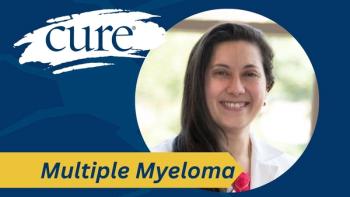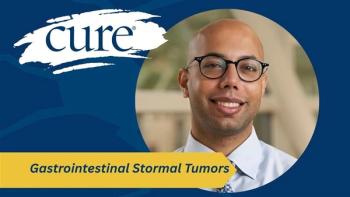
FDA Approves Two New Indications for Keytruda in Advanced Melanoma
The FDA has expanded the approval for single-agent Keytruda to include the frontline treatment of patients with advanced melanoma regardless of BRAF status and to include the treatment of patients with Yervoy-refractory melanoma.
The FDA has expanded the approval for single-agent Keytruda (pembrolizumab) to include the frontline treatment of patients with advanced melanoma regardless of BRAF status, based on a substantial improvement in progression-free and overall survival compared with Yervoy (ipilimumab) in the phase 3 KEYNOTE-006 trial.1
In the study, which compared two Keytruda regimens with Yervoy, the PD-L1 inhibitor reduced the risk of disease progression by greater than 40 percent and the risk of death by greater than 30 percent.
“As recently as five years ago, there were few treatment options for patients suffering from advanced melanoma,” Roger M. Perlmutter, MD, PhD, president, Merck Research Laboratories, the developer of the PD-1 inhibitor, said in a statement. “Today’s news is another exciting milestone for Keytruda and for patients with this disease."
In addition to the frontline approval, the FDA also updated the label for Keytruda to include the treatment of patients with Yervoy-refractory melanoma, based on a greater than 43 percent reduction in the risk of death versus chemotherapy in the phase 2 KEYNOTE-002 trial.2
“This growing body of evidence in patients with advanced melanoma supports the expanded indication for Keytruda,” Omid Hamid, MD, director of the Melanoma Center at The Angeles Clinic and Research Institute, said in a statement. “This approval highlights the importance of Keytruda for advanced melanoma, where we are in need of additional treatment options.”
KEYNOTE-006 included 834 patients with unresectable stage 3 or 4 advanced melanoma who had received no more than one prior systemic therapy. Among the overall patient population, 65.8 percent had not previously received systemic treatment for advanced melanoma and 68.7 percent had an ECOG performance status of 0.
Patients were randomized in a one-to-one-to-one ratio to receive four cycles of Yervoy at 3 mg/kg every three weeks (278 patients), 10 mg/kg of Keytruda every three weeks (277 patients), or 10 mg/kg of Keytruda every two weeks (279 patients). Both doses of Keytruda were higher than the previously approved FDA regimen of 2 mg/kg every three weeks. However, the frontline approval for Keytruda is also for 2 mg/kg every three weeks.
Patient response in KEYNOTE-006 was assessed at week 12 and every six weeks thereafter by RECIST 1.1. The median follow-up was 7.9 months (ranging from 6.1 to 11.5).
At a six-month assessment, the progression-free survival (PFS) rate with Keytruda was 47.3 percent and 46.4 percent in the two- and three-week arms respectively, compared with 26.5 percent for the Yervoy arm. Median PFS was 5.5, 4.1, and 2.8 months, respectively. The PFS benefit with Keytruda over Yervoy was observed regardless of patients’ PD-L1 status.
The nine-month PFS rates were 40 percent and 42 percent compared with 16 percent, in the two-week, three-week, and Yervoy arms, respectively, according to Merck, which develops Keytruda.
The one-year overall survival (OS) rate was 74.1 percent for the two-week Keytruda arm versus 58.2 percent for those receiving Yervoy. In the three-week Keytruda group, the one-year OS rate was 68.4 percent.
The objective response rates (ORR) were 33.7 percent and 32.9 percent, in the two- and three-week arms. In the Yervoy arm, the ORR was 11.9 percent. Complete response rates were 5.0 percent, 6.1 percent, and 1.4 percent, respectively.The toxicity profiles of the agents were consistent with other reported studies of the two checkpoint agents. Although Keytruda was administered for a longer duration, rates of grade 3-5 adverse events (AEs) were lower with both the two- and three-week doses versus Yervoy at 13.3 percent and 10.1 percent versus 19.9 percent, respectively. Discontinuation rates were also lower with Keytruda, at 4.0 percent, 6.9 percent, and 9.4 percent, respectively.
The most frequently reported all-grade AEs in the two- and three-week Keytruda arms were fatigue (20.9 percent, 19.1 percent), diarrhea (16.9 percent, 14.4 percent), rash (14.7 percent, 13.4 percent), and pruritus (14.4 percent, 14.1 percent). All grade 3/4 AEs occurred in less than one percent of the Keytruda arms, except diarrhea (2.5 percent and 1.1 percent).
In the Yervoy arm, the most common all-grade AEs were pruritus (25.4 percent), diarrhea (22.7 percent), fatigue (15.2 percent), and rash (14.5 percent). Grade 3/5 AEs occurred in less than 1 percent patients in the Yervoy arm, except diarrhea (3.1 percent) and fatigue (1.2 percent). There was one patient death associated with Yervoy treatment.
"Data supporting the approval emerged from a large and diverse patient population, including patients with very advanced disease and patients whose tumors carried BRAF mutations, thus demonstrating both the breadth of our clinical development program for Keytruda, and the potential of Keytruda to extend the lives of those afflicted with this grievous malignancy,” said Perlmutter.
For the second new indication, the KEYNOTE-002 study enrolled 540 patients with Yervoy-refractory advanced melanoma. A majority of patients enrolled (83 percent) had M1c disease and 73 percent had received at least two prior systemic therapies.
Patients received Keytruda at 2 mg/kg (180 patients), 10 mg/kg (181 patients), or chemotherapy (179 patients). The chemotherapy utilized was investigator's choice and consisted primary of paclitaxel plus carboplatin, paclitaxel, carboplatin, dacarbazine, or temozolomide. Keytruda was administered every three weeks.
The coprimary endpoints of the study were PFS and OS. The secondary endpoints of the study focused on ORR, duration of response (DOR), and safety, with responses assessed using RECIST 1.1 criteria.
Overall, following 410 PFS events, the risk of disease progression or death was reduced by 43 percent with Keytruda at 2 mg/kg and 50 percent with Keytruda at 10 mg/kg, compared with chemotherapy. Six-month PFS rates were 34 percent, 38 percent, and 16 percent, respectfully, with nine-month PFS rates of 24 percent, 29 percent, and 8 percent.
At the 2-mg/kg dose, the ORR with Keytruda was 21 percent with a median DOR not yet reached. At the analysis, 92 percent of responses were ongoing. In the 10-mg/kg arm, the ORR was 25 percent (DOR not yet reached) and 87 percent of patients remained in response. A statistical different in DOR was not seen between Keytruda arms.
The ORR in the chemotherapy arm was 4 percent, the median DOR was 37 weeks, and 63 percent of responses were ongoing at the time of the analysis.
Treatment-related grade 3/4 AEs occurred in 11 percent of patients treated with the 2-mg/kg dose, 14 percent with 10-mg/kg, and 26 percent with chemotherapy.
The most frequently occurring grade 3/4 treatment-related AEs in the 2 mg/kg Keytruda group were fatigue, generalized edema, and myalgia (1 percent each). In the 10-mg/kg arm, the most common grade 3/4 AEs were hypopituitarism, colitis, diarrhea, decreased appetite, hyponatremia, and pneumonitis (1 percent each).
Among patients receiving chemotherapy, the grade 3/4 AEs most frequently observed were anemia (5 percent), fatigue (5 percent), neutropenia (4 percent), and leucopenia (4 percent).
The rates of serious adverse events were 8 percent, 11 percent, and 11 percent, respectively. Treatment discontinuation as a result of adverse events occurred in 3 percent of patients treated with the 2-mg/kg dose, 7 percent with 10-mg/kg, and 6 percent in those receiving chemotherapy. One treatment-related death was reported in the 2-mg/kg Keytruda arm compared with none with chemotherapy.
Keytruda was previously approved by the FDA for patients with unresectable or metastatic melanoma and disease progression following Yervoy and, if BRAF V600 mutation positive, a BRAF inhibitor.
In November, the FDA approved the PD-1 inhibitor nivolumab (Opdivo) for the frontline treatment of patients with BRAF wild-type advanced melanoma. A supplemental application was also submitted to the FDA for frontline nivolumab in patients with BRAF V600 mutation—positive advanced melanoma; however, in November, the FDA issued a complete response letter to the manufacturer, Bristol-Myers Squibb, informing the company that additional data were needed for the application.
References:
- Robert C, Schachter J, Long GV, et al. Pembrolizumab versus ipilimumab in advanced melanoma. N Engl J Med. 2015;372(26):2521-2532.
- Ribas A, Puzanov I, Dummer R, et al. Pembrolizumab versus investigator-choice chemotherapy for ipilimumab-refractory melanoma (KEYNOTE-002): a randomised, controlled, phase 2 trial. Lancet Oncol. 2015;16(8):908-918.





